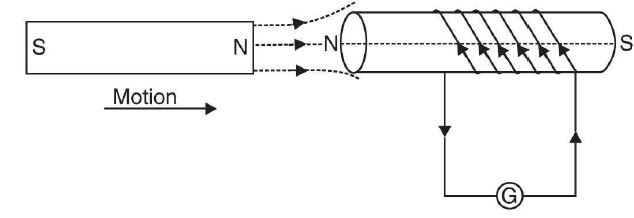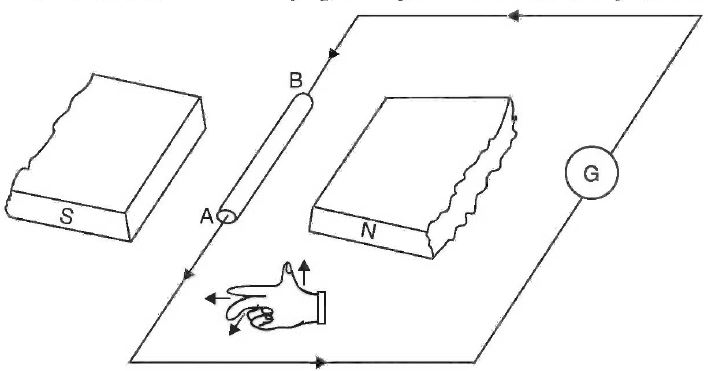Electrical Engineering ⇒ Topic : Direction of Induced E.M.F. and Current
|
|
| Gaurav
| |
Direction of Induced E.M.F. and Current The direction of induced e.m.f. and hence current (if the circuit is closed ) can be determined by one of the following two methods (i) Lenz's Law (ii) Fleming's right-hand rule (1) Lenz's law. Emil Lenz, a German scientist, gave the following simple rule (known as Lenz's law) to find the direction of the induced current : The induced current will flow in such a direction so as to oppose the cause that produces it i.e. the induced current will set up magnetic flux to oppose the change in flux. Note that Lenz's law is reflected mathematically in the minus sign on the R.H.S. of Faraday's second law viz. e = - N dΦldt. The negative sign simply reminds us that the induced current opposes the changing magnetic field that caused the induced current. The negative sign has no other meaning. Let us apply Lenz's law to Fig. (a) Here the N-pole of the magnet is approaching a coil of several turns. As the N-pole of the magnet moves towards the coil, the magnetic flux linking the coil increases. Therefore an e.m.f. and hence current is induced in the coil according to Faraday's laws of electromagnetic induction. According to Lenz's law, the direction of the induced current will be such so as to oppose the cause that produces it. In the present case, the cause of the induced current is the increasing magnetic flux linking the coil. Therefore, the induced current will set up magnetic flux that opposes the increase in flux through the coil. This is possible only if the left hand face of the coil becomes N-pole. Once we know the magnetic polarity of the coil face, the direction of the induced current can be easily determined by applying right-hand rule for the coil. If the magnet is moved away from the coil, then by Lenz's law, the left hand face of the coil will become S-pole.Therefore, by right-hand rule for the coil, the direction of induced current in the coil will be opposite to that in the first Case. figure (a) It may be noted here that Lenz's law directly follows from the law of conservation of energy i. e. in order to set up induced current, some energy must be expended. In the above case, for example,when the N-pole of the magnet is approaching the coil, the induced current will flow in the coil in such a direction that the left-hand face of the coil becomes N-pole. The result is that the motion of the magnet is opposed. The mechanical energy spent in overcoming this opposition is converted into electrical energy which appears in the coil. Thus Lenz's law is consistent with the law of conservation of energy. (2) Fleming's Right-Hand Rule. This law is particularly suitable to find the direction of the induced e.m.f. and hence current when the conductor moves at right angles to a stationary magnetic field. It may be stated as under Stretch out the forefinger, middle finger and thumb of your right hand so that they are at right angles to one another If the forefinger points in the direction of magnetic field, thumb in the direction of motion of the conductor,then the middle finger will point in the direction of induced current. figure (b) Consider a conductor AB moving upwards at right angles to a uniform magnetic field as shown in Fig.(b). Applying Fleming's right-hand rule, it is clear that the direction of induced current is from B to A. If the motion of the conductor is downward, keeping the direction of magnetic field unchanged, then the direction of induced current will be from A to B.
| |
|
| |
!! OOPS Login [Click here] is required for more results / answer


